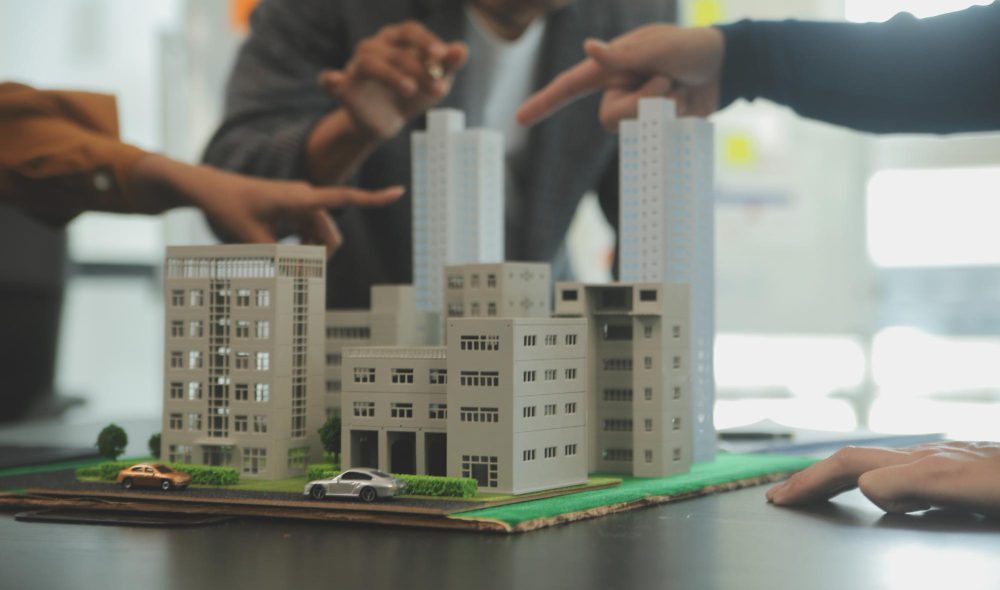
Most people picture tall towers, polished lobbies, or glossy brochures when they think of real estate. However, the actual value of a building is not in how it looks. It depends on the quality of construction. A strong foundation, solid structure, and careful work decide whether a building will last for decades or begin to fail within a few years.
A real estate development company that puts quality first is doing more than selling apartments or offices. It creates safe communities and protects long-term investments. Different parts of the world face various risks, but the rule is the same. Buildings that are built with care last. Poorly built ones don’t.
This guide explains why construction quality is essential, how it shapes safety, cost, and value, and what part both developers and buyers play in making sure real estate is built to last.
Quality That Pays Off
The National Institute of Building Sciences shows that construction quality can be measured. It is not just an idea. A real estate development company that values quality does more than sell homes or offices. It helps build safe places for people and protects long-term investments. In Japan, strong homes survive earthquakes. In South Asia, buildings made for floods keep families safe. In Europe and North America, good houses and towers last for generations. Without quality, buildings become weak and unsafe.
This guide explains why construction quality matters, how it affects safety, costs, and quality, and what role both developers and buyers play in making sure real estate is built to last. Saves Report: Every dollar spent on stronger construction and updated codes saves about eleven dollars in future losses. That saving comes from fewer repairs, lower insurance claims, and fewer disasters.
This proves that cutting costs during construction is a false economy. Families often discover that a poorly built home drains money through constant repairs. Investors learn that defective buildings lose tenants and resale value. By contrast, high-quality buildings last longer, perform better, and hold their worth.
What Experts Know About Quality
Philip B. Crosby, a respected voice in management and quality, was recognized by the American Society for Quality (ASQ) for his contributions. He is best remembered for stating, “Quality is free. It’s not a gift, but it’s free. The unquality things are what cost money.”
In real estate, this principle is easy to see. Properly curing concrete is far cheaper than repairing cracked columns later. Installing and testing fireproofing before handover costs less than the damage caused when a fire system fails. Prevention is not only safer but also more economical.
The Real Meaning of Construction Quality
Many people judge quality by surface details like paint, tiles, or fittings. But real construction quality is built into the unseen parts of the structure. It starts with design, where engineers ensure the building can carry loads, withstand weather, and resist disasters. Without sound design, no amount of finishing can make a building safe.
Materials are another cornerstone. Cement, steel, waterproofing, and bricks must meet standards and be tested. If poor materials are used, the structure is compromised from the start. Artistry then turns drawings into reality. Concrete that is not cured loses strength. Quality reinforcement placed incorrectly weakens the frame, and sloppy waterproofing leads to leaks.
Supervision ties it all together. Qualified professionals ensure each stage is done correctly. And before handover, testing and commissioning confirm that plumbing, wiring, elevators, and fire systems are safe and ready. Quality is not an accident; it is the result of careful work at every step.
Strong Buildings, Lower Costs
The real impact of quality appears years after handover. Strong buildings stay dry, resist cracks, and function smoothly. Weak ones quickly. Quality flaws, leaking roofs, faulty wiring, or broken lifts. Each failure costs money and creates frustration for residents.
Examples worldwide show the difference. Japan’s strict building codes have saved countless lives during earthquakes. In flood-prone cities, elevated and waterproofed structures recover faster, while weaker ones collapse. Well-built properties become safe assets. Poorly built ones turn into liabilities.
For developers, poor quality risks lawsuits and damaged reputations. For buyers, it means endless repairs and lost value. For society, it leads to unsafe environments. Good construction prevents all these outcomes.
Building Codes: The Safety Net
Every country has rules to keep buildings safe. In the United States, these rules are called the International Building Code (IBC). They cover how strong a structure must be, how it should protect against fire, and how it should perform in an emergency. The code is updated often to include lessons from past accidents and new building methods.
In South Asia, the Bangladesh National Building Code (BNBC 2020) provides standards for quality, construction, and materials suited to local risks such as cyclones and earthquakes. In Europe, the Eurocodes create a unified approach across nations.
A responsible real estate company in Bangladesh or anywhere else does not stop at the bare minimum. Many exceed the codes by adopting international certifications or hiring independent inspectors. Codes are the baseline, not the finish line.
How Quality Feels Day to Day
For residents, construction quality shows itself in ordinary experiences. A ceiling that stays dry during a storm, a lift that runs smoothly, a staircase that feels stable, and plumbing that works without leaks all signal good construction. These details save money and reduce stress.
Over time, buyers see the difference in property value. Strong buildings hold or increase in price. Weak ones struggle to rent or sell, no matter how attractive they once looked. Quality is not just about safety; it shapes comfort and financial security.
Who’s Responsible for Quality?
Developers carry the most significant responsibility. A professional real estate development company sets up systems to check materials, supervise work, and document compliance. They provide not only a finished building but also the proof that it meets the required standards.
Buyers also play a role. They can ask for reports, visit sites, and study how older projects from the same developer have performed. When buyers demand evidence, the whole industry raises its standards. Quality improves when accountability is shared.
Modern Tools That Raise Standards
Today, technology makes quality easier to achieve. Building Information Modeling (BIM) lets designers spot clashes before construction begins. Prefabrication allows parts to be built in factories where conditions are controlled, ensuring consistency. Digital inspection tools record checks and create transparent records.
These tools are now used globally, not just in advanced economies. When combined with simple practices like proper curing of concrete and safe storage of materials, they ensure that quality is consistent and predictable.
Does Good Quality Cost More?
Many believe quality always means higher costs. In reality, quality shifts when you pay, not how much you pay in total. Spending slightly more upfront on better materials and proper checks prevents much larger repair bills later.
A poorly built building may look affordable at handover, but it becomes expensive through endless maintenance and declining value. A well-built one saves money, holds its worth, and provides peace of mind. Quality is not a luxury; it is good economics.
The Bottom Line on Quality
The role of construction quality in real estate development is clear. It defines safety, comfort, and long-term value. A real estate development company that builds with discipline is protecting both its clients and its own reputation.
For buyers and investors, the lesson is simple: demand evidence, not promises. Ask for inspection reports, code approvals, and the performance of past projects. Whether in Asia, Europe, Africa, or the Americas, the principle never changes. Buildings are meant to last for generations. For something built to endure that long, quality is no Quality. It is the foundation of everything.
